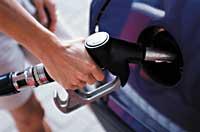Towards an ecological car
2001/01/21 Mendiburu, Joana - Elhuyar Zientziaren Komunikazioa
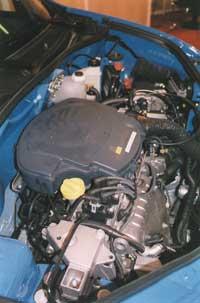
Yes, it is true that he spent the day without a car for some time, but it is not bad to remember the pollution of the car so used and precious. However, today's issue is not the air pollution generated by the car, even directly. In fact, although most of the car advances have been made to make the driver travel more comfortably, safely and quickly, the automotive industry is increasingly concerned about pollution. New laws and consumer awareness have been the main drivers of changes cars have undergone to reduce their pollution.
There is nothing more to see parking problems in large cities and towns to realize the increase in traffic. In each house there are one or two cars and the trend is huge to go anywhere. From the moment it is produced to its elimination, it is a chain of polluting activities, so since the idea of building ecological cars began to develop, the production process itself and fuels have changed.
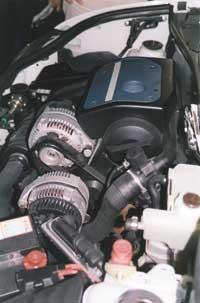
The first ecological change produced by the automotive industry was the improvement of fuels. Unleaded fuels were marketed more than ten years ago and have spread very soon. The European Union also launched its plan of withdrawal of the superrán by the year 2000, and although it can still be found in service stations, cars that circulate with supercars will soon disappear from the roads. Another improvement that fuels have had has been the incorporation of additives containing oxygen to optimize combustion.
Another fundamental change in reducing air pollution has been the reduction of fuel consumption. No doubt, diesel engines are currently the engines to use to reduce consumption. Although it is not very ecological in terms of nitrogen oxides and black particles, a lower consumption always entails a lower emission of carbon dioxide.
Time for new fuels
In addition to gasoline and diesel, other types of fuels have begun to appear in motorsport, such as natural gas, biofuels, electricity and fuel cells. This hydrocarbon does not emit sulfur oxides, lead, dust or black fumes when burned. It emits little nitrogen oxides, while in the case of carbon monoxide it is the cleanest.
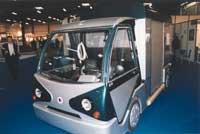
Biofuels, that is, fuels obtained through the transformation of biomass, seem to follow their path slowly. One of the best known is biodiesel, obtained mainly from rapeseed and sunflower. Biodiesel is used in diesel engines and burning reduces the emission of carbon monoxide, sulfur dioxide, fraction and unburned hydrocarbons. It is really interesting to reduce the warming effect, but if it intensifies its use, it would carry terrible side effects such as the need for more agricultural surface or the waste of large amounts of water.
Another type of car that is trending is the electric car. In 1881 the French physicist Gustave Trouvé carried out an electric tricycle, but the oil energy soon advanced. It began to strengthen in the 1960s, but despite being the most ecologically dominated energy, the economic forces and interests of oil companies have always been above themselves. They are the "heart" batteries of the electric car. The initial batteries did not have too much capacity and could make 50 km of video without charging. Nickel and cadmium batteries are currently used, with a maximum speed of 100 km/h.
Finally, fuel cells are widely used as a source of energy in space, but in motorsport they have been investigated recently.
Taking advantage of the car that does not work
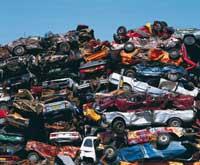
Fuel cells need oxygen and hydrogen. Although there is no problem in getting oxygen, hydrogen production is very expensive. Research goes that way and is considered to be interesting, since if you get the characteristics of the electric car would be much better.
When old cars are discarded they are not thrown as is. The automotive industry is increasingly engaged in the manufacture of recyclable cars. At the moment, the car is recyclable between 75 and 80%, but a European directive requires that by 2015 it be recyclable by 95%. This problem can be addressed from two points of view: working recovery methods or using the most recyclable material possible to build the car.

At the end of the car life three treatments are performed, obtaining relatively clean materials of industrial utility. For example, thanks to the electromagnets a scrap of iron formed by iron and steel is extracted that is used to manufacture new cars. However, the use of iron and steel is decreasing and that of plastic is reinforced. The wheels are incinerated and enter the composition of ash cover, amusement parks and sports fields.
Therefore, it is clear that new cars consume less, but if they are used more because they are more comfortable and faster, it does not reduce pollution!
Confirmed air pollution
Small particles in the air produce cardiovascular disease and respiratory problems. Researchers at the University of Baltimore, Johns Hopskins, have analyzed the consequences of the five major air pollutants in cities. And it is not clear that the excessive amount of ozone, carbon monoxide, sulfur dioxide and nitrogen oxides cause death. However, there is no doubt that particles of diameter less than 10 micrometers are lethal.

The Environmental Agency (EPA) regulated the levels of these particles called PM10, but researchers believe that measures should be sharpened. At the moment, the average annual level of these particles is 50 micrograms/m3, but this measure should be reduced below half to reduce the risk of death. The key is in the hands of the automotive industry.
Well, the key is in the hands of the automotive industry and users, so everyone also has something to say and do. If short distances are made on foot or by bicycle and public transport is used, it is safe to reduce air pollution. In addition, they are a series of recommendations that could be very useful for pocket and health.
Published in the supplement Natura de Gara

Gai honi buruzko eduki gehiago
Elhuyarrek garatutako teknologia






